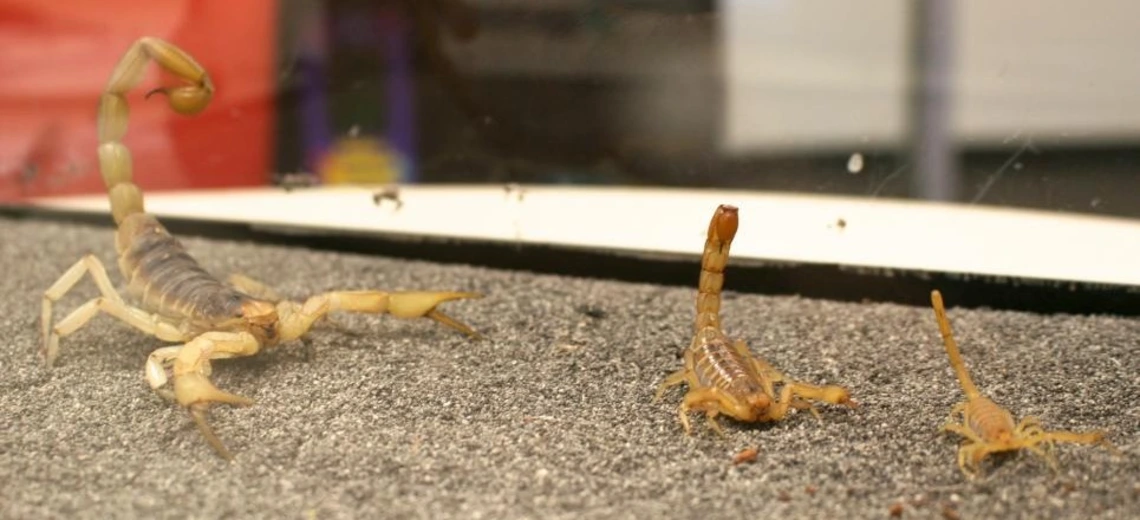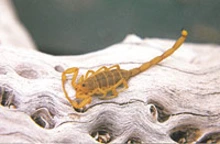
Like bees and spiders, scorpions are arthropods. Only one of the 30 species of scorpions found in Arizona is regarded as life-threatening: the bark scorpion (Centruroides sculpturatus).
In the photo above, there are three types of scorpions (from left): the giant hairy scorpion, the striped tail scorpion and the bark scorpion. The bark scorpion may be distinguished from other less toxic species by its more slender tail segments and pincers. Reaching only an inch and a half at maturity, it is a comparatively small scorpion. It is also the best climber of the scorpion species.
Scorpions are relatively inactive during the daylight hours. The majority of stings reported to the poison center occur at night during the warm summer months.

Prevention Tips near the house
- Clear away debris, trash, logs and bricks where scorpions like to live.
- Mow grass and keep it short.
- Fix holes and cracks in the house.
Signs & Symptoms
Scorpion stings can cause immediate local pain with minimal swelling. Numbness and tingling are frequently reported and may travel across the body. The injured area may be very sensitive to touch, pressure, heat and cold.
Small children are at the highest risk of severe reactions. They can show jerky body and wild eye movements.
First Aid
The majority of stings occurring in healthy young adults may be managed at home with basic first aid measures and follow-up.

First aid should include:
- cleaning the site with soap and water
- cool compress
- position the affected limb to a comfortable position
- over-the-counter medication as needed for minor discomfort
Call 1-800-222-1222 for our poison experts to determine if you need to go to the hospital.

